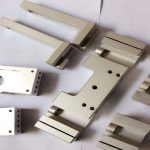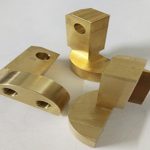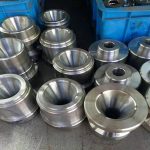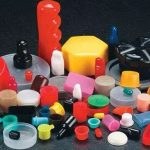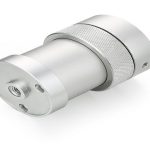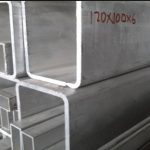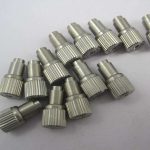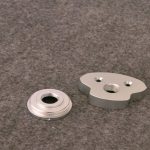New technologies in the manufacturing industry provide metal manufacturers with more options for producing parts for their customers. In particular, fiber laser cutting machines enable manufacturers to cut more parts a day than CO2 laser cutting. The automatic loading and unloading system connected to these laser cutting machines also enables the workshop to work 24 hours a day.
Although manufacturers can cut parts faster than ever, they must deal with other bottlenecks downstream of the laser. Depending on the cutting quality or customer requirements, they may need to deburr, chamfer or remove oxide layers. In order to stay competitive and send parts out of the store in time, manufacturers should consider automating the deburring process like a laser cutting process.
The traditional way to solve the burr problem is to add more agencies in the deburring department. However, increased labor costs, inefficiency, lack of consistency, and the need to provide a safer working environment led the company to seek another solution: automatic deburring.
Before you try any further, it is important to understand the deburring terminology, as it may mean differently to everyone you ask for. For some people, this may mean removing only vertical burrs or scum. Others might think that it not only eliminates vertical burrs, but also rounds the edges. The traditional method is to grind off vertical burrs or polish the surface. Therefore, any metal manufacturer must define the processing that needs to be performed in the deburring area of the part.
This will be the customer’s deburring specifications or internal specifications that affect the deburring requirements. Manufacturers’ sales teams, engineers, and plant managers need a united front to determine the conditions required to deliver high-quality parts. Do you need to deburr after laser cutting? Why consider deburring or rounding? How to quote to customers?
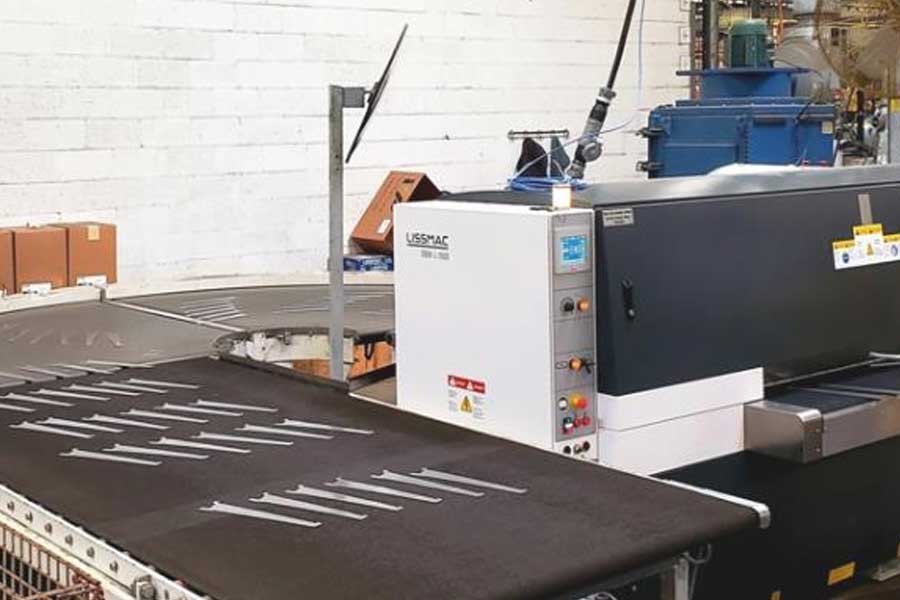
These are some important problems, but they cause other problems. Does the shop need to handle the top and bottom of the part? Is it possible to remove only vertical burrs without worrying about sharp edges? Does the customer need to remove vertical burrs, rounded top and bottom edges, and No. 4 finishes? If a customer asks the store to buy PVC-coated stainless steel with a surface treatment of No. 4, can the material be sent through the automatic deburring process?
After determining the deburring specifications internally or with the customer, the manufacturer can determine which automatic deburring machine is suitable for the application. But is this machine alone enough? The shop may wish to consider adding electric conveyors to feed parts into or out of the machine, thereby making the process more efficient.
Consider how to make the deburring process more effective now and in the future, which alleviates future growth problems. For example, some large companies can have up to two shifts, and multiple people can remove burrs from parts from lasers, plasmas or stamping machines. With automatic deburring machines, these large manufacturers can not only reduce the number of shifts, but also process parts better and more efficiently, thereby further reducing personnel. On the other hand, a smaller manufacturing company may have 2 to 3 employees deburring, but these people may also be welders, bending machine operators, or laser operators. Do they really want their highly skilled workers to deburr or spend time welding or operating a bending machine? Most companies say they want skilled workers to focus on their profession. They are more willing to pay low-skilled workers to load and unload parts on automatic deburring machines.
Calculate the cost of manual deburring
Even with all the advanced technology on today’s automatic laser equipment, if it is not dialed into the machine correctly, it may cause the paper full of burrs to be removed. How do you deal with all parts with burrs? Scrap or deburring? Pull workers from other machines to deburr and delay work?
When companies look at the economics of their current manual deburring methods, many companies do not understand the actual costs associated with their processes. Sometimes they will be surprised by the total processing cost of the deburring department. For example, if a manufacturer has two shifts and four people in each shift perform manual deburring, the cost associated with deburring will exceed $300,000 per year. Using a machine to deburr the top and bottom of the part, the manufacturer can see a large reduction in workers, and perhaps eliminate the shifts that used to be dedicated to deburring; in fact, only two people can be used in the automatic Loading and unloading parts on the deburring machine. These labor savings can help manufacturers refresh the automatic deburring machine in a year or less.
Knowing the total processing costs associated with manual deburring may be beneficial, but manufacturers should consider other overlooked benefits when automating the deburring department.
Ensure worker safety
Processors must have noticed that manufacturing workers are getting older. If not, please consider this: In 2018, there were 64.2 million Americans working over 50 years of age. According to data from the Bureau of Labor Statistics, because people either cannot afford their pensions or just want to live longer and continue to persevere, by 2025, 17% of the workforce will be over 65 years old.
As manufacturers struggle to find workers for vacant positions, experienced workers become more and more valuable. Unfortunately, these older workers do not have the same physical characteristics as the younger workers. As human beings age, especially when they reach 45 years of age, their strength and aerobic exercise capacity begin to decline. Fatigue at work has become a real problem.
At the Manufacturers and Manufacturers Association Safety Conference in Lexington, Kentucky in April, Brian Roberts, Assistant Vice President of Workers’ Compensation and Ergonomics of CNA Insurance, said that fatigue opens the door to musculoskeletal diseases, and musculoskeletal diseases are precisely what Is one of them. The biggest cause of lost working hours in the US manufacturing industry. In fact, as early as 2013, the Bureau of Labor Statistics reported that 33% of all workplace injuries and illnesses were related to these musculoskeletal injuries.
Automated deburring and rounding equipment can make it easier for manufacturers to deburr than manual deburring, thereby reducing the fatigue of the manufacturer. For the automatic deburring machine, employees are required to move the laser-cut parts from the skeleton to the conveyor belt that transports the deburring equipment. The barcode scanner also simplifies the setup of the machine. After scanning the barcode on the part, the machine can adjust to the material thickness specified by the code. It can also open or close each work head. The operator does not have to worry about manual adjustment of tools or sand blocks. A machine with wear compensation function will give a consistent rounding when measuring wear.
Using electric linear conveyors or return conveyors can increase efficiency and reduce operator movement and lifting. The automatic deburring machine or machine and the accompanying conveyor belt have a relatively small footprint, especially compared to the layout of the laser cutting machine. When their presence has never been taken seriously, this type of unit setup can keep older workers productive and extend working hours.
Deliver consistent parts
The store knows that their reputation is based on quality and on-time delivery. Automatic deburring can reduce the potential risk of scrapped parts.
The difference between the two conversions of manual grinders is very large, and their understanding of comparing “burr parts” with machines with set parameters and repeatability is also different. Deburring can be very subjective. In short, there are too many human factors hindering your progress. Having a machine that maintains deburring specifications can produce better and more consistent parts.
A store can hire highly skilled workers to manually polish laser-cut parts to increase the chances of consistent deburring and acceptable rounding, but the truth is that manufacturers rarely put the most experienced workers on these jobs. Their value is elsewhere in the store in front of the bending machine or welding machine. That left the job to inexperienced workers. One grinder machined parts that he thought was good enough would not eliminate all burrs, while another grinder next to him would do a lot of effort. Now the manufacturer has a pallet containing three different stacks of “premium” parts.
The risk of returning parts is always there, but defective parts cannot be quality controlled and enter the manufacturing process of the final product, which may cause great pain to the entire supply chain. Imagine a stainless steel part that is not completely rounded. Someone cuts himself on the piece that is now connected to the food processing equipment. Then, food processors must shut down the production line, clean and disinfect the entire production line, and must worry about workers’ compensation claims.
Automated deburring and rounding machines can deliver parts with a consistent finish every time they are sent out. The manufacturer can work with the customer to determine the required surface quality, and once the machine is dialed in to deliver the agreed specifications, the program can be saved and used for future work. Customers can expect to get the same deburring and rounding parts they got six months ago.
These automatic deburring machines also integrate sensor technology to notify the operator when belts and blocks need to be replaced for deburring. This ensures that the consumables are always in the best condition to deliver high-quality and consistent parts.
Promote better paint/powder adhesion on steel parts
Many manufacturers who cut with CO2 or fiber lasers use oxygen as an auxiliary gas. As a result, they must deal with the problem of removing laser oxide from the part or burning the edges. The oxide layer formed on the laser cut edge and the inner cut edge of the part is a barrier to the adhesion of the paint, which can prevent the paint from adhering to the bare metal. The paint actually sticks to the oxide layer and peels off the part, exposing the bare metal to the environment, which can cause premature rust.
In order to avoid oxide layer problems during cutting, manufacturers can use nitrogen as an auxiliary gas for cutting, or use oxygen as an auxiliary gas for cutting, and then perform media sandblasting on the parts. Sandblasting can remove oxides on the edges, but will not round the top and bottom edges of the part. (If the edges are not rounded, only a small amount of paint will adhere to the top and bottom edges.) Automatic deburring machine can solve the problem of oxide layer removal and edge rounding.
It has been found that rounded edges help paint and powder coatings adhere to parts and prevent corrosion. Quite simply, rounding the top and bottom edges can make the surface to which the paint adheres more flat, while the sharp 90-degree edge has almost no paint that can adhere to the edge.
Salt spray tests show that companies applying paint or powder coatings need to remove laser oxide and rounded edges at the same time to obtain the best paint adhesion solution. When performing these two processes, manufacturers can see their painted or powder-coated parts in the salt spray chamber for more than 1,000 hours without worrying about paint adhesion.
The housing of the automatic deburring machine is meaningful for the modern metal manufacturing environment. The management achieved real labor savings. As people got rid of the arduous and monotonous work of manually polishing the edges, the morale of the workshop was boosted. Older workers are less likely to hurt themselves when doing this heavy work. The parts received by the customer are consistent and in the best shape, which can be painted or powder coated.
Link to this article:What are the benefits of automatic deburring?
Reprint Statement: If there are no special instructions, all articles on this site are original. Please indicate the source for reprinting:https://www.cncmachiningptj.com/,thanks!
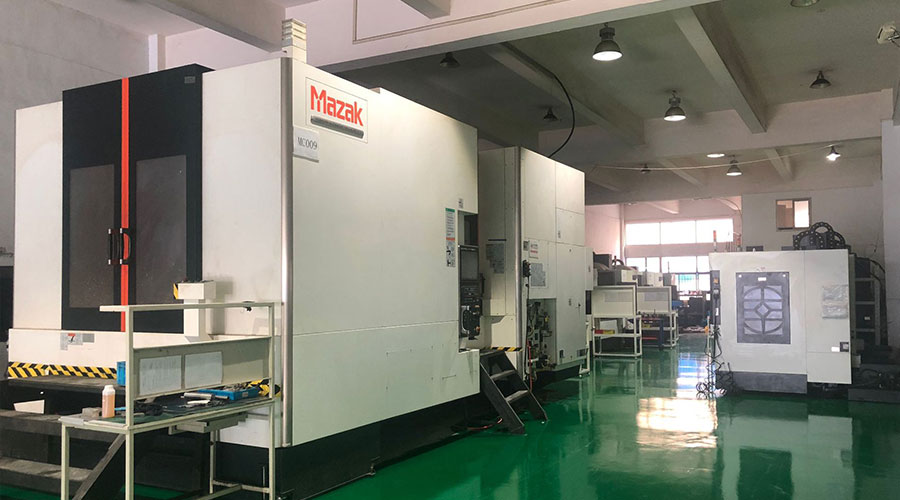 3, 4 and 5-axis precision CNC machining services for aluminum machining, beryllium, carbon steel, magnesium, titanium machining, Inconel, platinum, superalloy, acetal, polycarbonate, fiberglass, graphite and wood. Capable of machining parts up to 98 in. turning dia. and +/-0.001 in. straightness tolerance. Processes include milling, turning, drilling, boring, threading, tapping, forming, knurling, counterboring, countersinking, reaming and laser cutting. Secondary services such as assembly, centerless grinding, heat treating, plating and welding. Prototype and low to high volume production offered with maximum 50,000 units. Suitable for fluid power, pneumatics, hydraulics and valve applications. Serves the aerospace, aircraft, military, medical and defense industries.PTJ will strategize with you to provide the most cost-effective services to help you reach your target,Welcome to Contact us ( [email protected] ) directly for your new project.
3, 4 and 5-axis precision CNC machining services for aluminum machining, beryllium, carbon steel, magnesium, titanium machining, Inconel, platinum, superalloy, acetal, polycarbonate, fiberglass, graphite and wood. Capable of machining parts up to 98 in. turning dia. and +/-0.001 in. straightness tolerance. Processes include milling, turning, drilling, boring, threading, tapping, forming, knurling, counterboring, countersinking, reaming and laser cutting. Secondary services such as assembly, centerless grinding, heat treating, plating and welding. Prototype and low to high volume production offered with maximum 50,000 units. Suitable for fluid power, pneumatics, hydraulics and valve applications. Serves the aerospace, aircraft, military, medical and defense industries.PTJ will strategize with you to provide the most cost-effective services to help you reach your target,Welcome to Contact us ( [email protected] ) directly for your new project.
Link to this article:What are the benefits of automatic deburring?
Reprint Statement: If there are no special instructions, all articles on this site are original. Please indicate the source for reprinting:Tungusten,Thanks!^^

